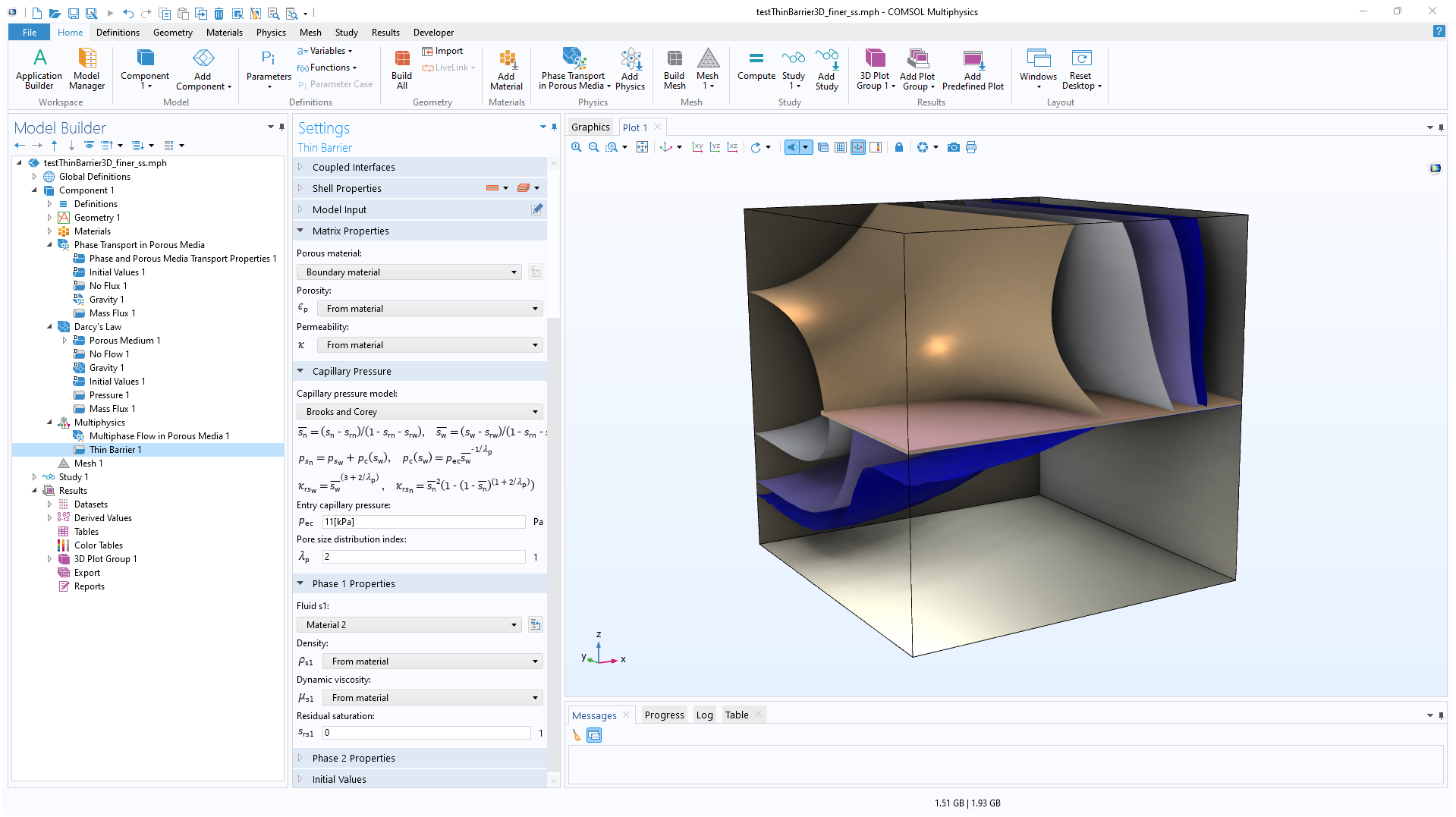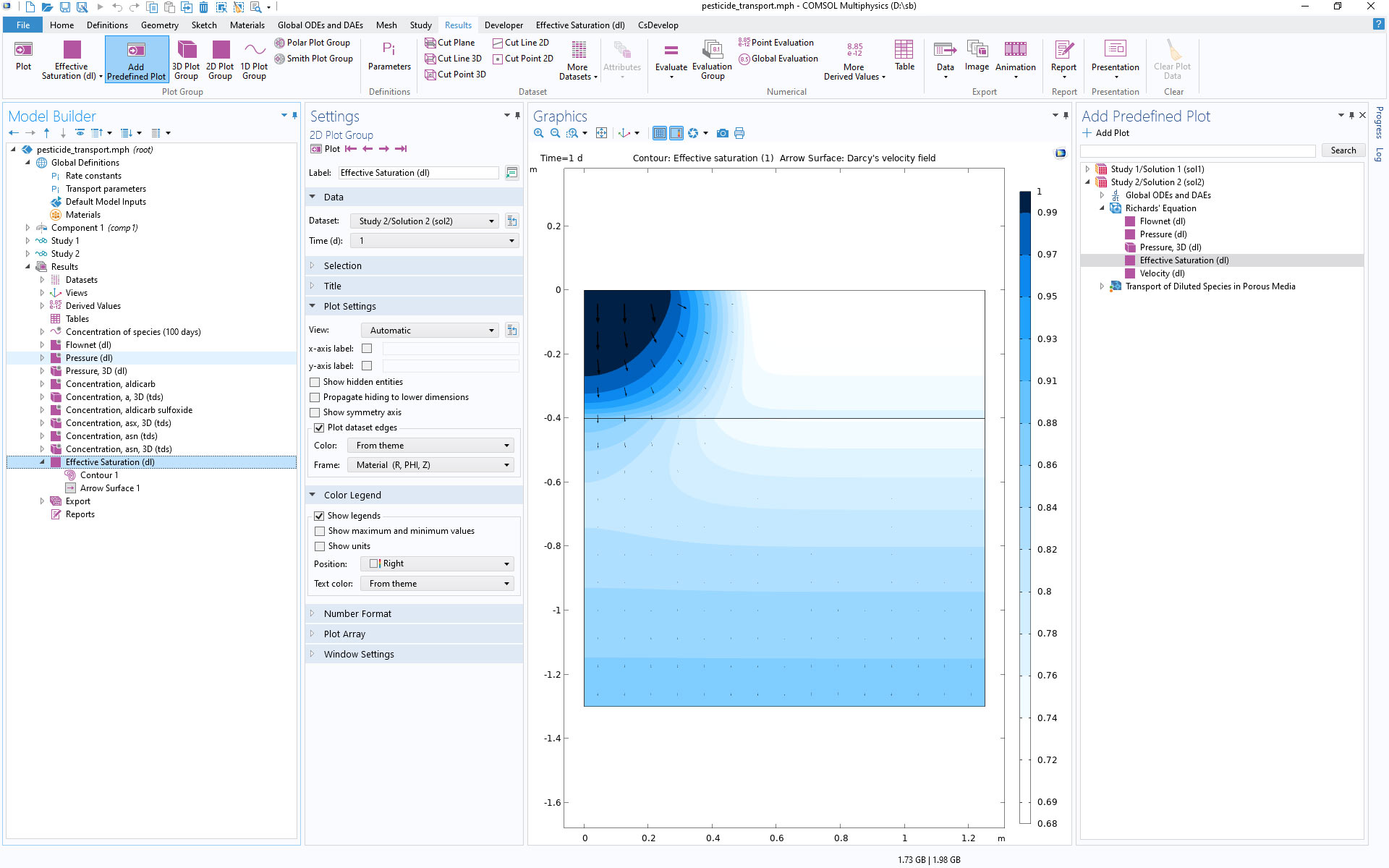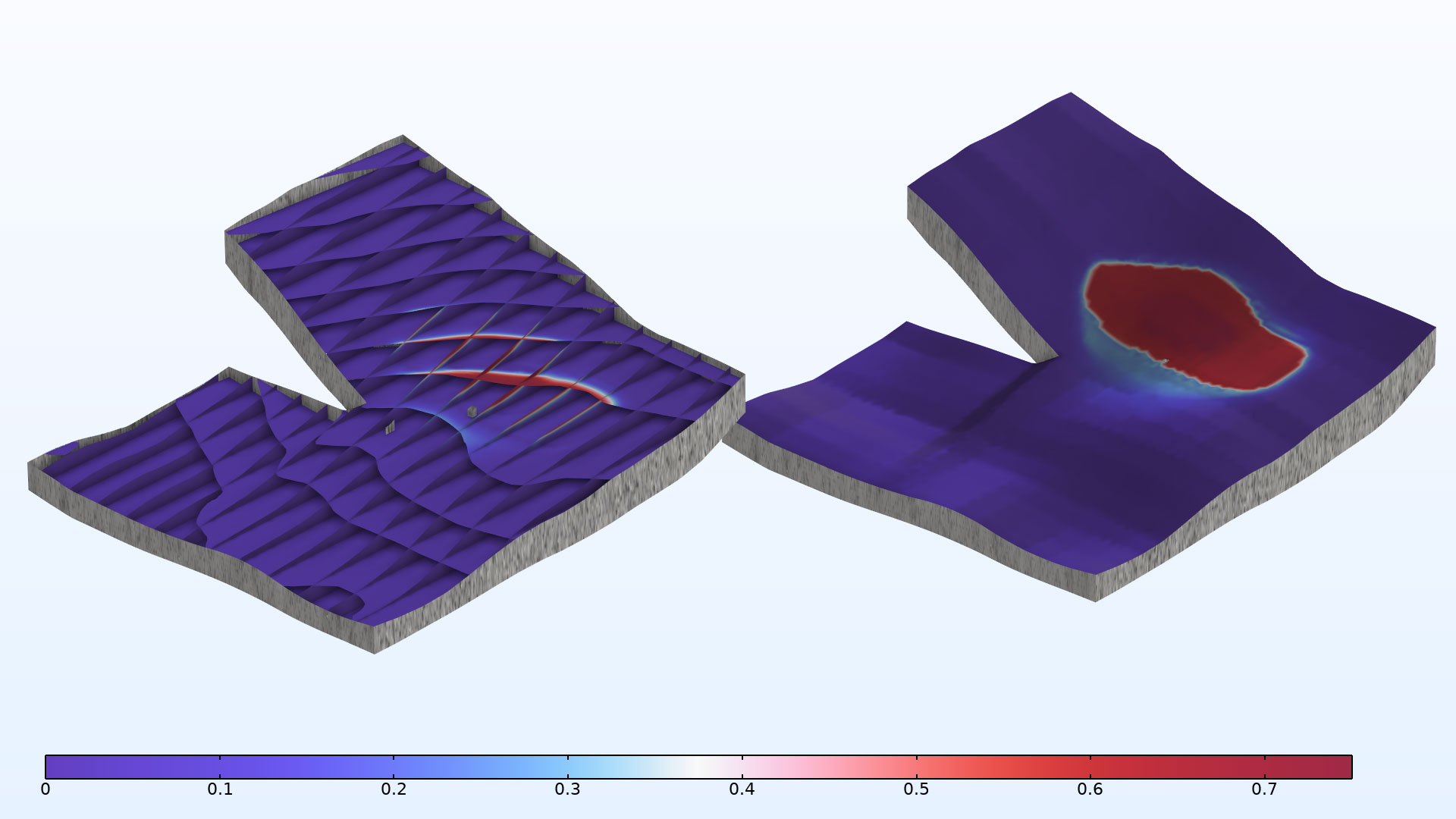support@comsol.com
Subsurface Flow Module Updates
For users of the Subsurface Flow Module, COMSOL Multiphysics® version 6.1 provides enhanced capabilities for modeling fractures, the flexibility to specify user-defined phase transitions, and two new tutorial models. Read about these updates and more below.
Climate Data: ASHRAE 2021
Ambient properties, such as temperature, humidity, precipitation, and solar radiation, can be defined from an Ambient Properties node under Definitions > Shared Properties. Along with the possibility of adding user-defined meteorological data, ambient variables can be computed from monthly and hourly averaged measurements from values in handbooks provided by the American Society of Heating, Refrigerating, and Air-Conditioning Engineers (ASHRAE). The meteorological data from the ASHRAE 2021 handbook has been integrated into COMSOL Multiphysics® and contains ambient data from more than 8500 weather stations around the world. You can see this new addition in the existing Glacier Flow tutorial model.
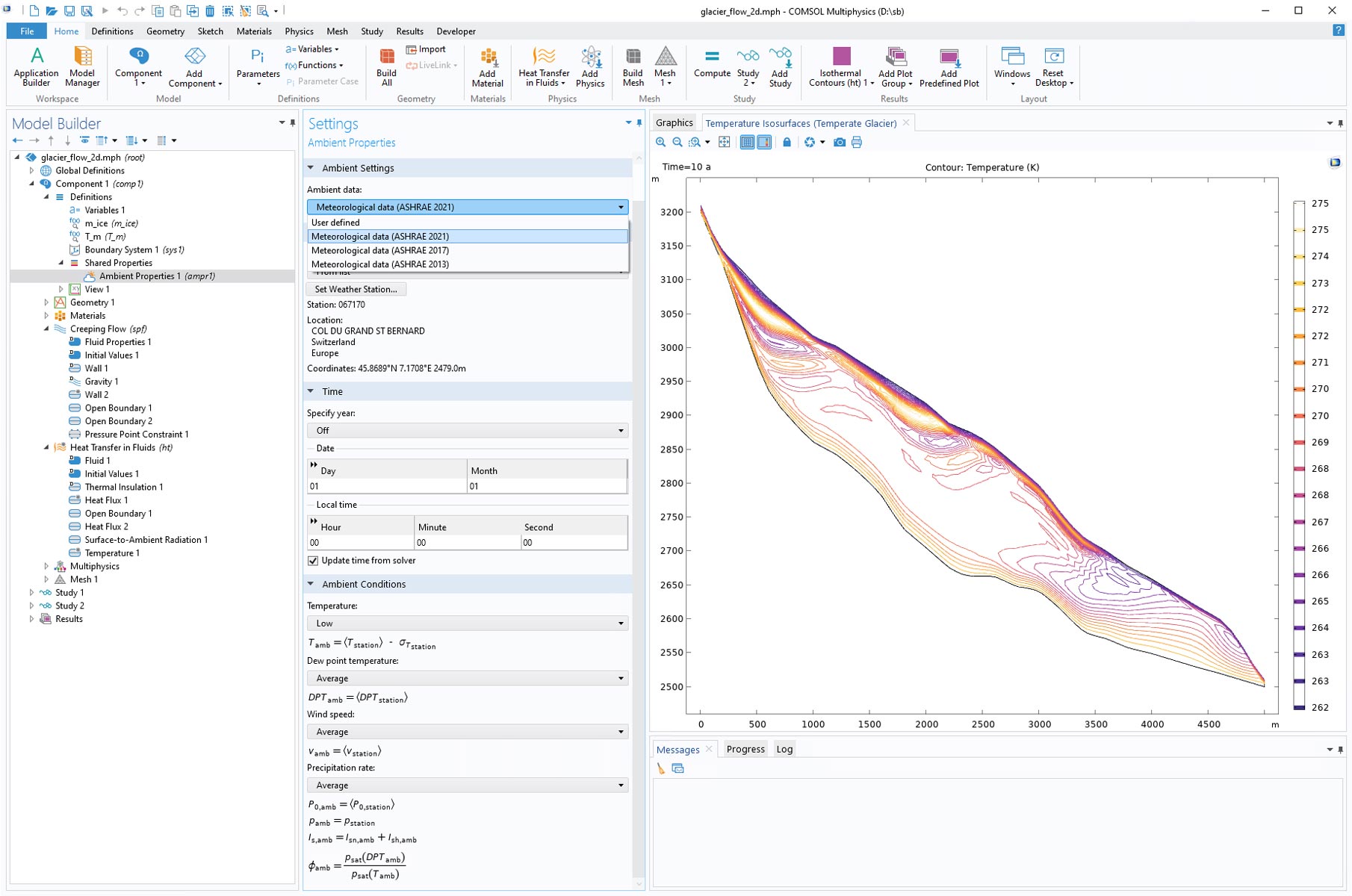
Improved Handling of Fractures
In the Darcy’s Law and Fracture Flow interfaces, fractures are now defined using phase-specific properties with the Fracture node. This feature contains a Fluid subnode that describes fluid, such as gas, liquid, or ideal gas, and a Fracture Material subnode that accounts for the fracture properties, such as porosity or transmissivity. Under the Fracture settings, you can describe the flow as Darcian (slow) or non-Darcian (fast), and a new Linearized storage model option is available. In the Darcy's Law interface, you can select whether fractures are highly conductive, such as open channels, or if they can be represented by thin barriers.
The Fracture node has also been added to the Transport of Diluted Species in Fractures and Transport of Diluted Species in Porous Media interfaces and is consistent with other fracture nodes for porous media transport. View these new improvements in the existing Geothermal Doublet and Flow in a Fractured Reservoir tutorial models.
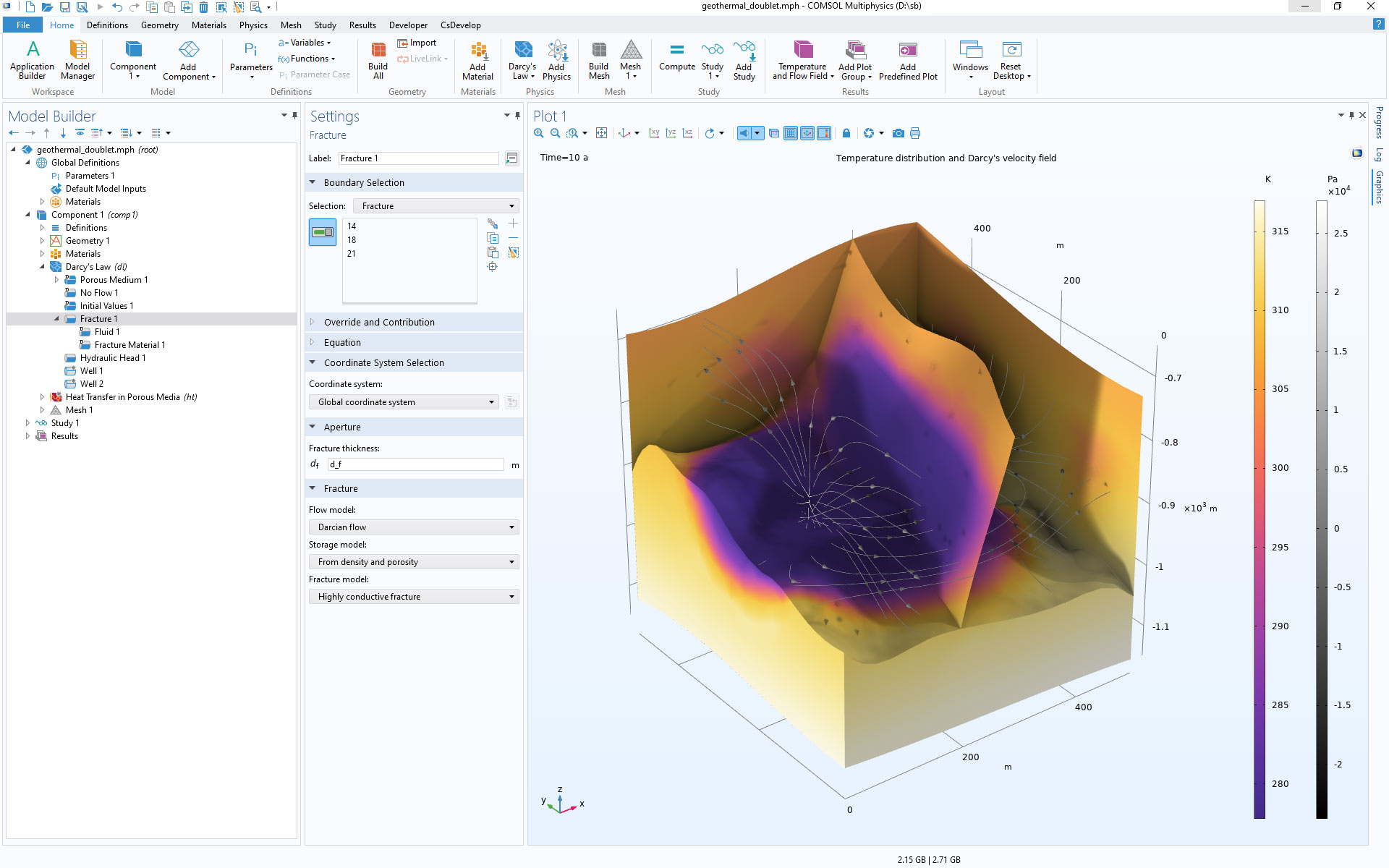
User-Defined Phase Transition
In the Heat Transfer in Porous Media interface, the Phase Change Material subnode now includes an option to introduce user-defined phase transition functions. This option enables you to use accurate phase change descriptions from measured data. You can view this feature in the new Phase Change in a Semi-Infinite Soil Column - Lunardini Solution and existing Frozen Inclusion tutorial models.
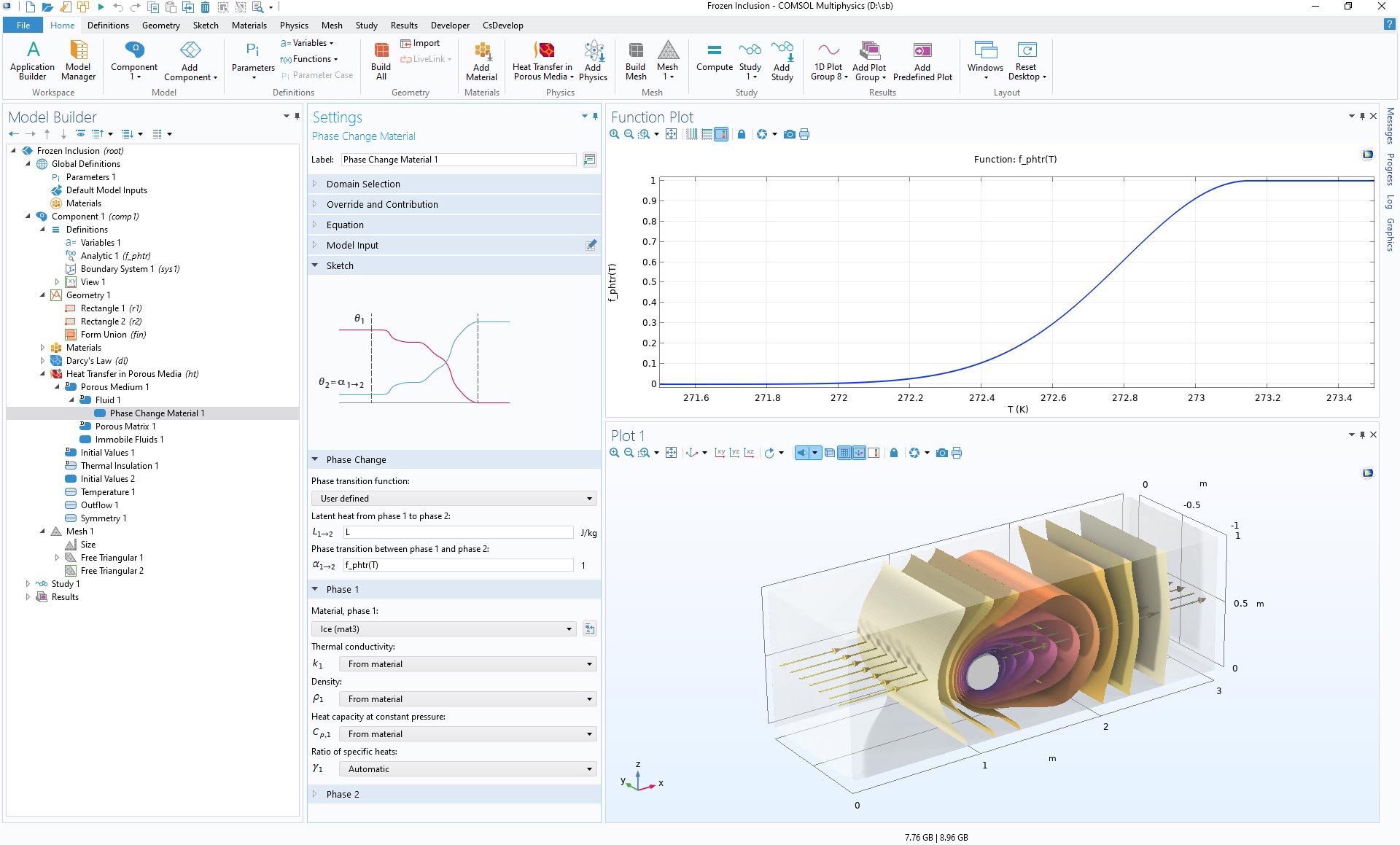
Thin Barrier Multiphysics Coupling
The Multiphase Flow in Porous Media interface contains a new Thin Barrier multiphysics coupling. This feature is optional and makes it possible to add a thin layer that acts as resistance for flow fields of all phases, without having to mesh the layer's thickness.
New Predefined Plots
It is now possible to add plots predefined by the physics interfaces after a study has been computed. The new Add Predefined Plots window, which can be opened from the toolbar in the Results section, enables you to select from a number of predefined plots. The available plots are organized in a tree structure where you can select the plot that you want to add using the Add Plot button. You can view this new feature in the existing Pesticide Transport and Reaction in Soil tutorial model.
New Tutorial Models
COMSOL Multiphysics® version 6.1 brings two new tutorial models to the Subsurface Flow Module.
Phase Change in a Semi-Infinite Soil Column - Lunardini Solution
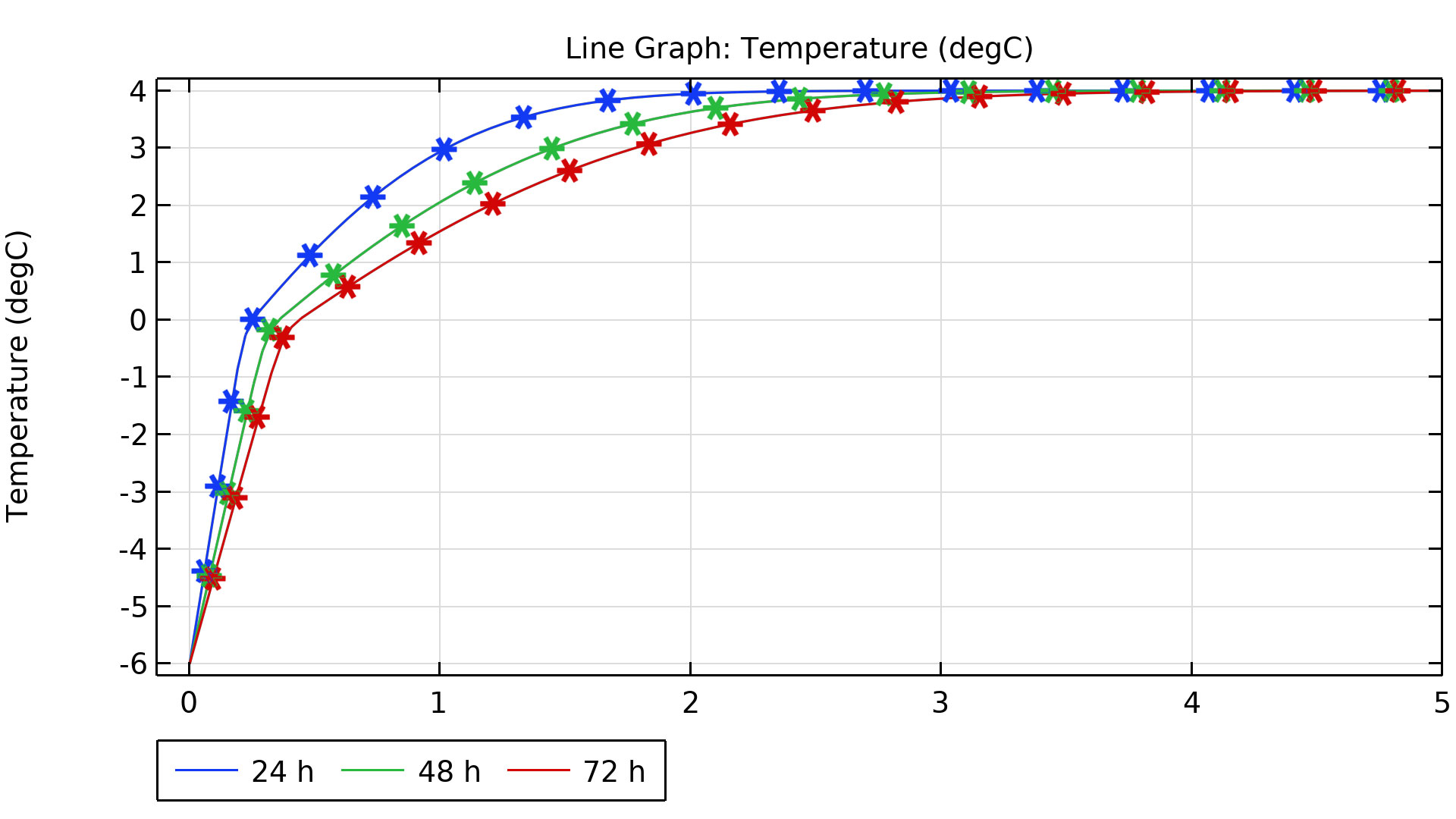
Application Library Title:
phase_change_lunardini

